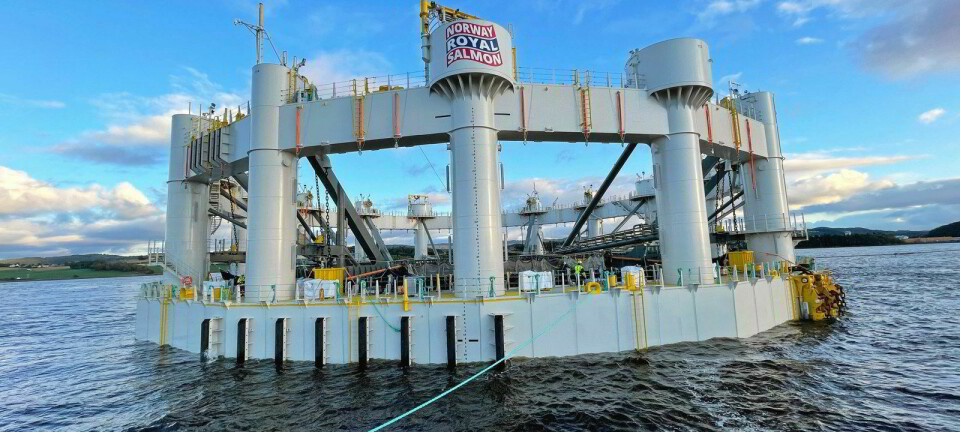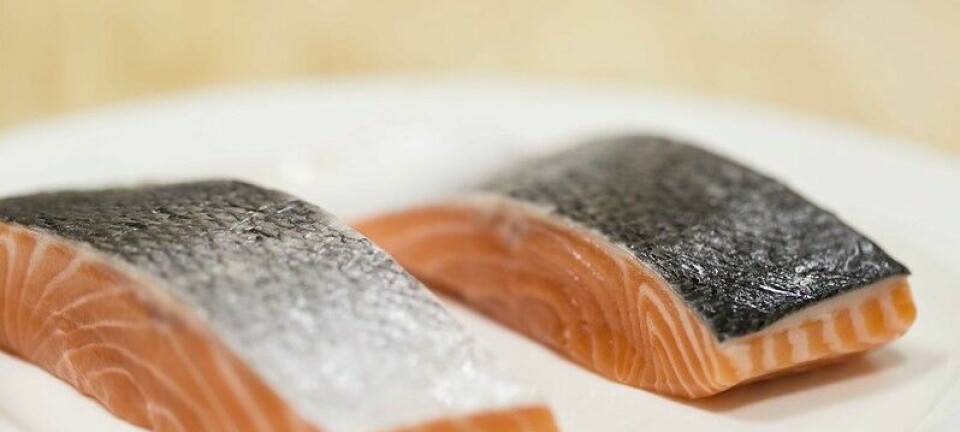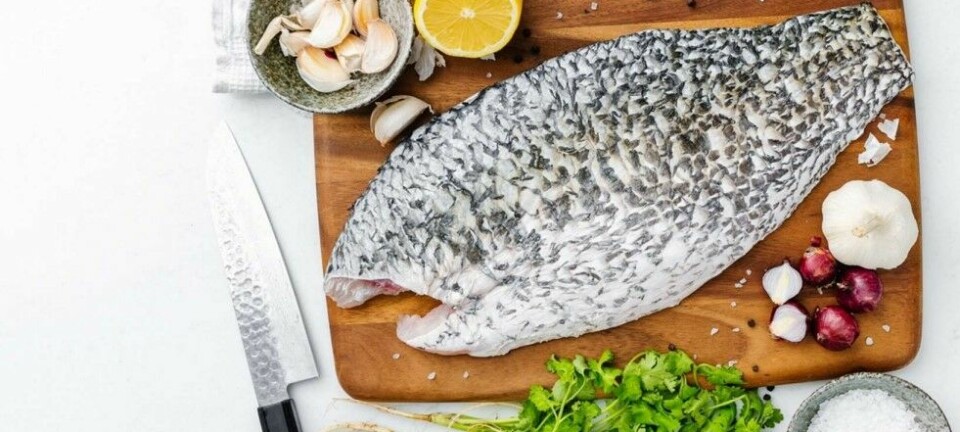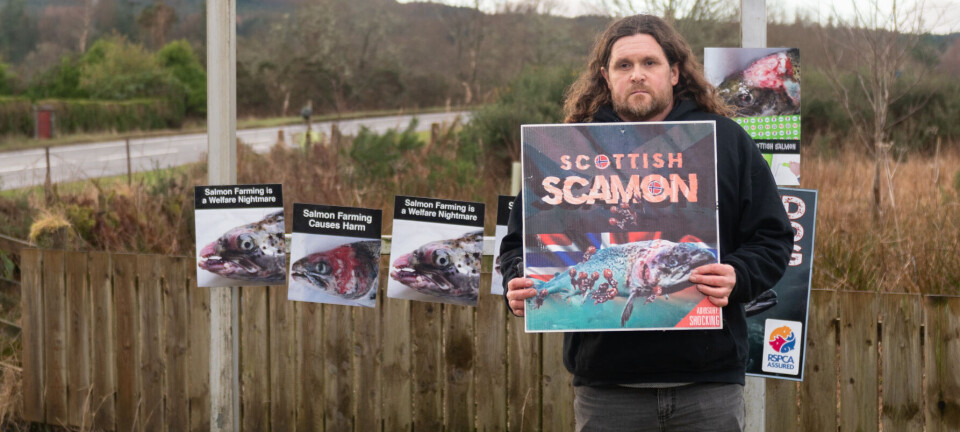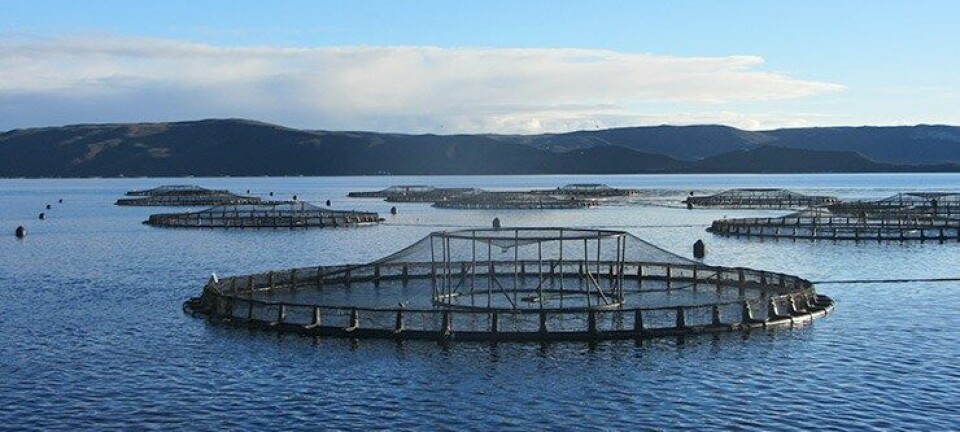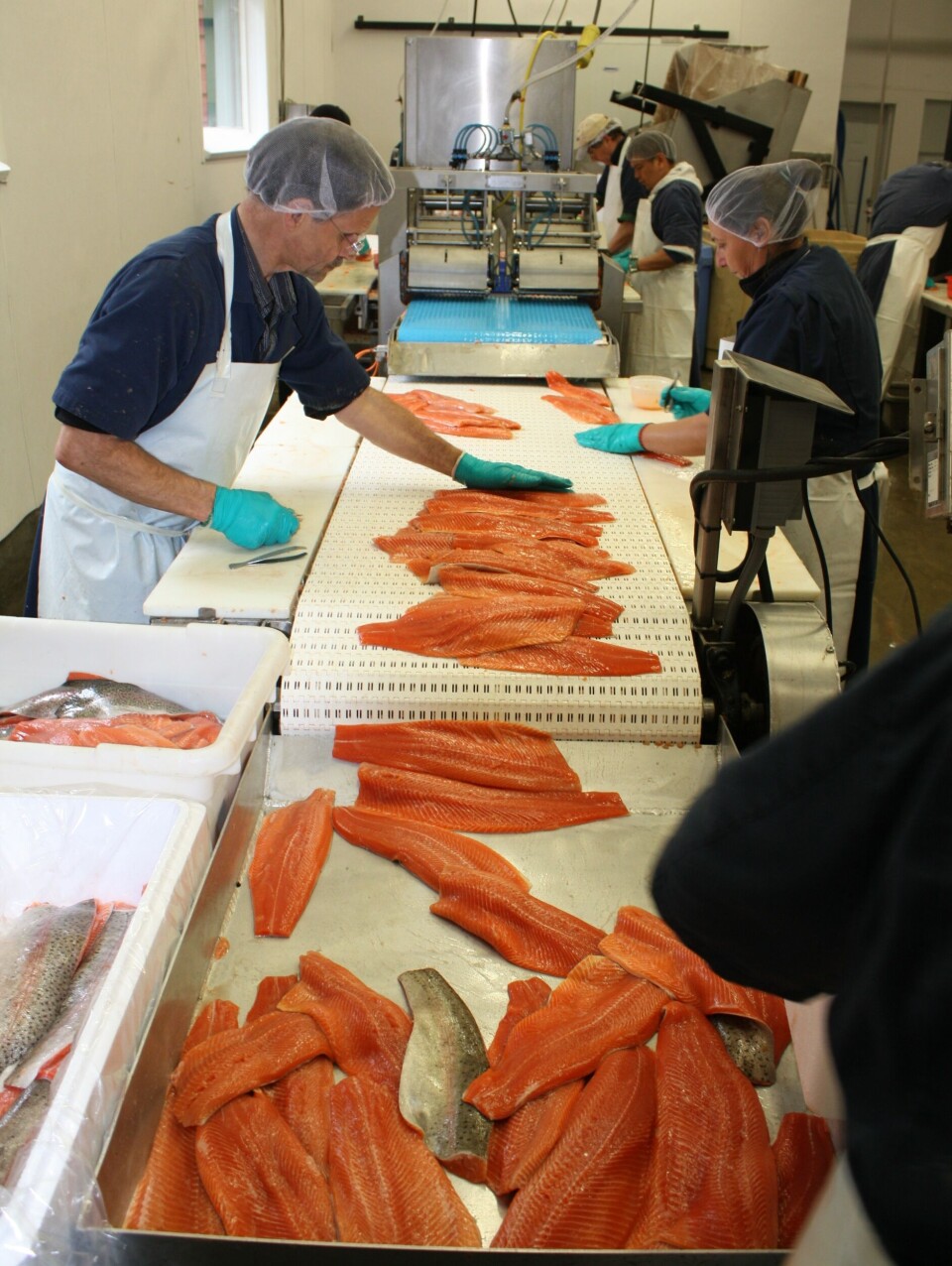
Hobby farm thrives
At last count, there were 64 facilities licensed to produce rainbow trout in fresh-water in British Columbia. Some of these are inactive, and some produce fish for so-called “U-Catch” operations, where people can come and catch their fish in return for a fee. One of the largest producers of rainbow trout operates a floating net-pen operation in a large lake north of Vancouver, while experimenting with the use of floating tanks for the production of 1.5-2.5 kg harvest fish.
A relatively common design for a BC-based trout farm was recently described by Julie Bertrand of the Oceanside Star, where she explains how Markus Knab and Teri Bayliss have figured out that fish farming is much like regular farming, and began farming trout after Mr Knab, who likes to fish, got bored in retirement.
More than 30,000 rainbow trout live in the eight manmade ponds that dot Markus Knab's Happy Trout Lodge in Parksville plant-filled creek meanders between some of the ponds, removing fish waste and re-oxygenating the water. On average, the fish spend a year growing in the ponds before being harvested and sold or transformed into smoked-trout products."The trout harvest could be done earlier," Knab said. "But the slower the fish grow, the better they taste."Fishing is what made Knab emigrate from Germany to Canada in 1977. After working as a fishing, hunting and canoe guide in Manitoba and the Yukon, he moved to Vancouver Island in 1995 to work at an Oceanside resort. He then worked as a realtor until he semi-retired five years ago.
Knab bought an uninhabited five-acre property on Grieg Road. After building his dream house next to an existing pond, he started thinking about what he would do with his free time."I just thought: Hey, I like to fish," he said. "I thought I would put rainbow trout in the pond and fish."He bought trout fingerlings from an Island producer and started growing them. Before he knew it, he was digging a new pond and then another, to the point where he bought his own excavator. His fish soon attracted the attention of herons, eagles, kingfishers, otters and minks. Knab estimates he has fed 30,000 trout to wildlife in the past five years. The property is now surrounded by an electric fence and high nets cover the ponds.
Being a fish farmer is pretty much like being a regular farmer, Knab says. While his fish find plenty to eat in the ponds, he feeds them Oceanwise-approved pellets each morning. He tends to the plants in the creek, making sure they don't take it over. He monitors the water temperature to keep algae blooms at bay and frequently tests for water quality. Every six months, he empties his ponds one at a time and power-washes them."I have a great time. I enjoy it," Knab said."It's a real farming job. You do it for the lifestyle. I have another job to support it."Knab and his partner Teri Bayliss harvest trout every Thursday. They put a net at the bottom of the selected pond, attract the fish over the collapsed net with food and then pull up the net. They throw the smaller fish back in the pond and bring the rest to their onsite commercial kitchen."We do everything on site," Knab said.
Clients can pick up fresh trout from the lodge Thursdays and Fridays. Knab and Bayliss sell their smoked-trout products at the Qualicum Beach Farmers Market, the Parksville Museum Farmers Market and the Cedar Farmers Market. During the summer, their trout can be found on the menu at a few Oceanside restaurants. Next spring, they're going to try growing salmon."We want to bring Spring (Chinook) and coho," Knab said. They also plan to open their ponds to fishermen for a fee next summer."It would be fun," Knab said.






















